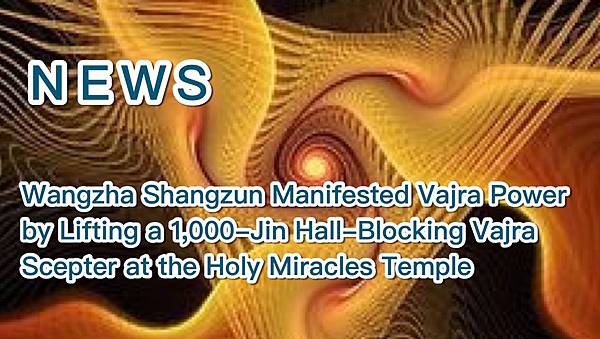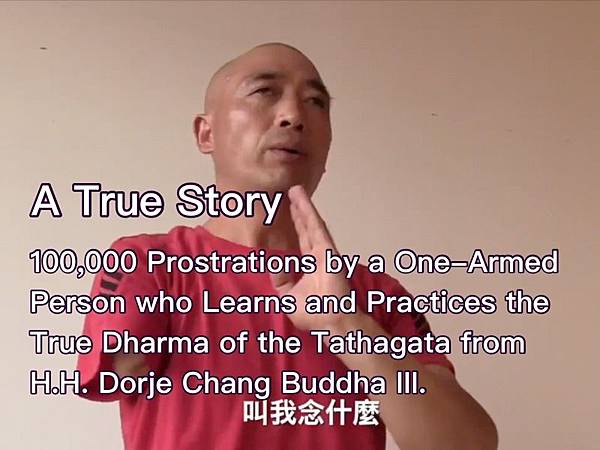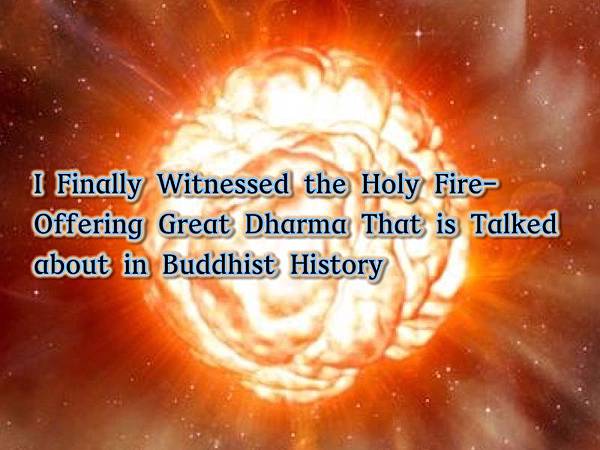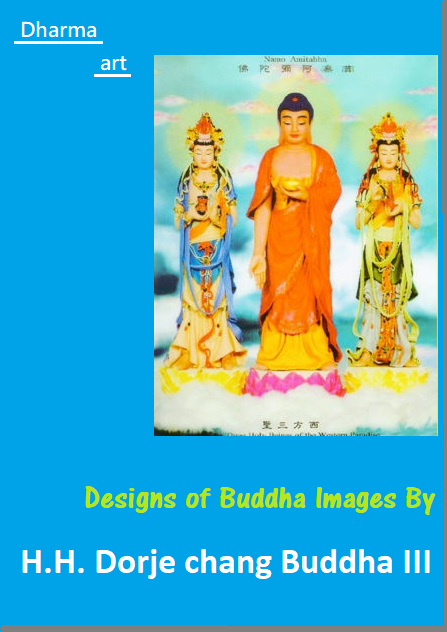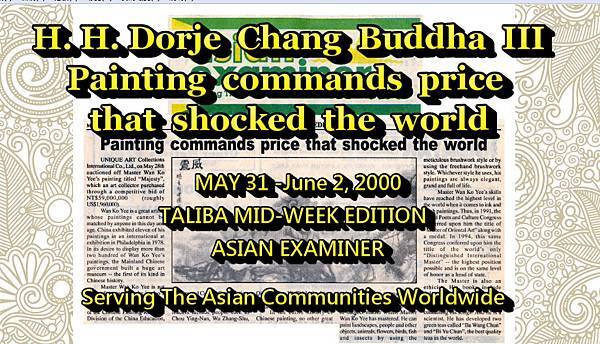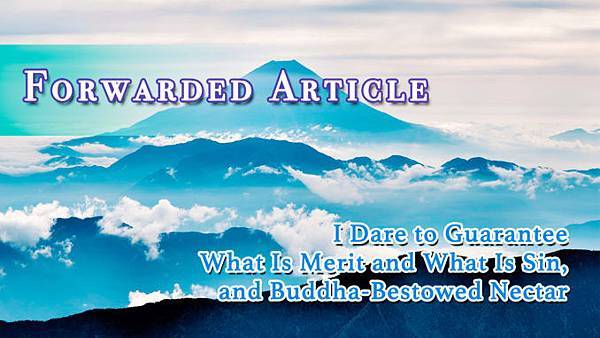目前分類:英文文章 (10)
- Apr 21 Sun 2019 11:09
Wangzha Shangzun Manifested Vajra Power by Lifting a 1,000-Jin Hall-Blocking Vajra Scepter at the Holy Miracles Temple
- Oct 21 Sun 2018 15:07
(Video) Revealing the Deeply Hidden Secret of H.H. Dorje Chang Buddha III (Revised)
- May 21 Mon 2018 09:17
The Explanation of the Buddha’s Title – “H.H. Dorje Chang Buddha III”
- May 04 Fri 2018 09:06
Designs of Buddha Images By H.H. Dorje chang Buddha III
- Apr 20 Fri 2018 08:23
H.H. Dorje Chang Buddha III Painting commands price that shocked the world
- Apr 17 Tue 2018 11:16
Reports in a Series about H.H. Dorje Chang Buddha III

Reports in a Series about H.H. Dorje Chang Buddha III
The Explanation of the Buddha’s Title – “H.H. Dorje Chang Buddha III”
- Apr 10 Tue 2018 13:20
SIXTEEN STYLES OF PAINTING AND PURCHASE OF PAINTINGS
H.H. 第三世多杰羌佛
SIXTEEN STYLES OF PAINTING AND PURCHASE OF PAINTINGS
After viewing the exhibits on display at the International Art Museum of America, many people mention that paintings created by H.H. Dorje Chang Buddha III (H.H. 第三世多杰羌佛), which are among those exhibits, are divided into sixteen different styles of painting. They want to have a more detailed understanding of those sixteen styles of painting. Therefore, we provide below a brief introduction to those different styles.
The achievements of H.H. Dorje Chang Buddha III (H.H. 第三世多杰羌佛) are myriad. Let us put aside for now twenty-nine of the thirty large categories of achievements contained in the book H.H. Dorje Chang Buddha III (H.H. 第三世多杰羌佛). With respect to only one of those thirty large categories-painting achievements- H.H. Dorje Chang Buddha III (H.H. 第三世多杰羌佛) has founded sixteen different styles of painting. This is in addition to being able to paint paintings of all other currently existing schools, such as the realist, abstractionist, and impressionist schools. The sixteen distinctive styles of painting that H.H. Dorje Chang Buddha III (H.H. 第三世多杰羌佛) has independently created are as follows: 1.The “Chaoshi” style; 2.The “Chouxiang Yunwei” style; 3.The “Wenfeng” style; 4.The “Fangfa” style; 5.The “Menglong” style; 6.The “Xiangtong” style; 7.The “Fanjuan style; 8.The “Pomo Xiantiao Xiezhen” style; 9. The “Weiyin” style; 10. The “Fanpu” style; 11.The “Miaoxie” style; 12.The “Pomo Weiyun” style; 13.The “Kuangxi” style; 14.The “Yousi” style; 15.The “Banqi” style; 16.The “Thickly Piled Patches of Color” style.
- Apr 04 Wed 2018 21:26
I Dare to Guarantee What Is Merit and What Is Sin, and Buddha-Bestowed Nectar
I Dare to Guarantee What Is Merit and What Is Sin, and Buddha-Bestowed Nectar
Great holy virtuous ones elucidated, “The effect of an inner-tantric initiation is to invite the yidam (a Buddha or a Bodhisattva) to come to the mandala to accept the disciple receiving the initiation. As long as the disciple cultivates and practices according to the dharma, his/her ending of birth and death is one-hundred-percent guaranteed!! The requirement of receiving an inner-tantric initiation is that one must have made real contribution to the true undertaking carried out by the Buddha and have created great merit. Examples are doing good deeds, relieving disasters, propagating the true dharma, practicing good karmas, abstaining from practicing evil dogmas, and contributing to temples with the genuinely true dharma of the Tathagatas.”
Yesterday, someone told me that some people thought that, since she had contributed a lot of funds to support and build temples, install Buddha statues, and visit famous mountains to pay homage to the Buddha, what she did is establishing great merit. Actually this is not correct. It could be merit, but could also be sin or negative karma. The reason is that you have to look at whether the temple is practicing the genuinely true dharma of the Tathagatas or not and whether the abbot of the temple is an ordinary person or a holy virtuous one at a certain level. If the abbot is a holy virtuous one, you will have merit to speak of. If, on the contrary, the temple’s abbot is an amateur to Buddhism or a master of evil teachings, the temple will transmit false Buddha-dharma and practice evil views from generation to generation and may even engage in forecasting based on word analysis, fortune telling, and spreading superstitious belief to heretics, strange or paranormal phenomena, evil deities, or spiritual manifestations. Such a temple will become a site of defrauding living beings and generating sin and negative karma, and people who make offerings to build this type of temples will definitely be sinful and malicious accomplices. We understand that people who intend to do Buddhist work absolutely want to know making offerings to which temple and doing what Buddhist work are creating truly permanent merit, but we can only say “that is unclear.” The reason is that you must see whether what the temple advocates and spread belongs to the true dharma of the Tathagatas or not and whether the temple’s abbot is a holy eminent monastic or not. If the abbot is not a holy eminent monastic and is an amateur to Buddhism, there exists no cause of planting merit and there is no way to know whether the successor of the next generation will be evil or upright.
